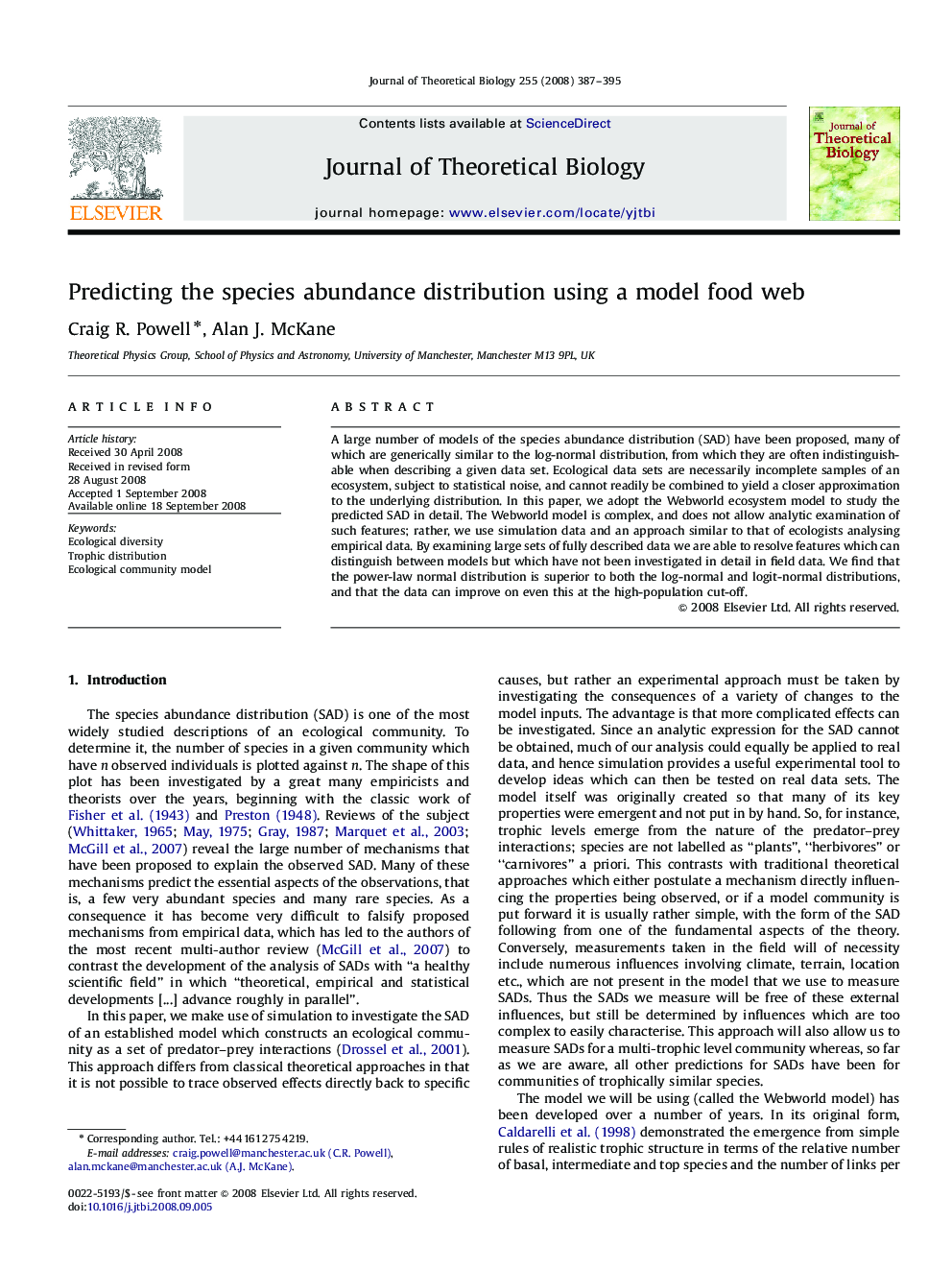| Article ID | Journal | Published Year | Pages | File Type |
|---|---|---|---|---|
| 4498596 | Journal of Theoretical Biology | 2008 | 9 Pages |
A large number of models of the species abundance distribution (SAD) have been proposed, many of which are generically similar to the log-normal distribution, from which they are often indistinguishable when describing a given data set. Ecological data sets are necessarily incomplete samples of an ecosystem, subject to statistical noise, and cannot readily be combined to yield a closer approximation to the underlying distribution. In this paper, we adopt the Webworld ecosystem model to study the predicted SAD in detail. The Webworld model is complex, and does not allow analytic examination of such features; rather, we use simulation data and an approach similar to that of ecologists analysing empirical data. By examining large sets of fully described data we are able to resolve features which can distinguish between models but which have not been investigated in detail in field data. We find that the power-law normal distribution is superior to both the log-normal and logit-normal distributions, and that the data can improve on even this at the high-population cut-off.
